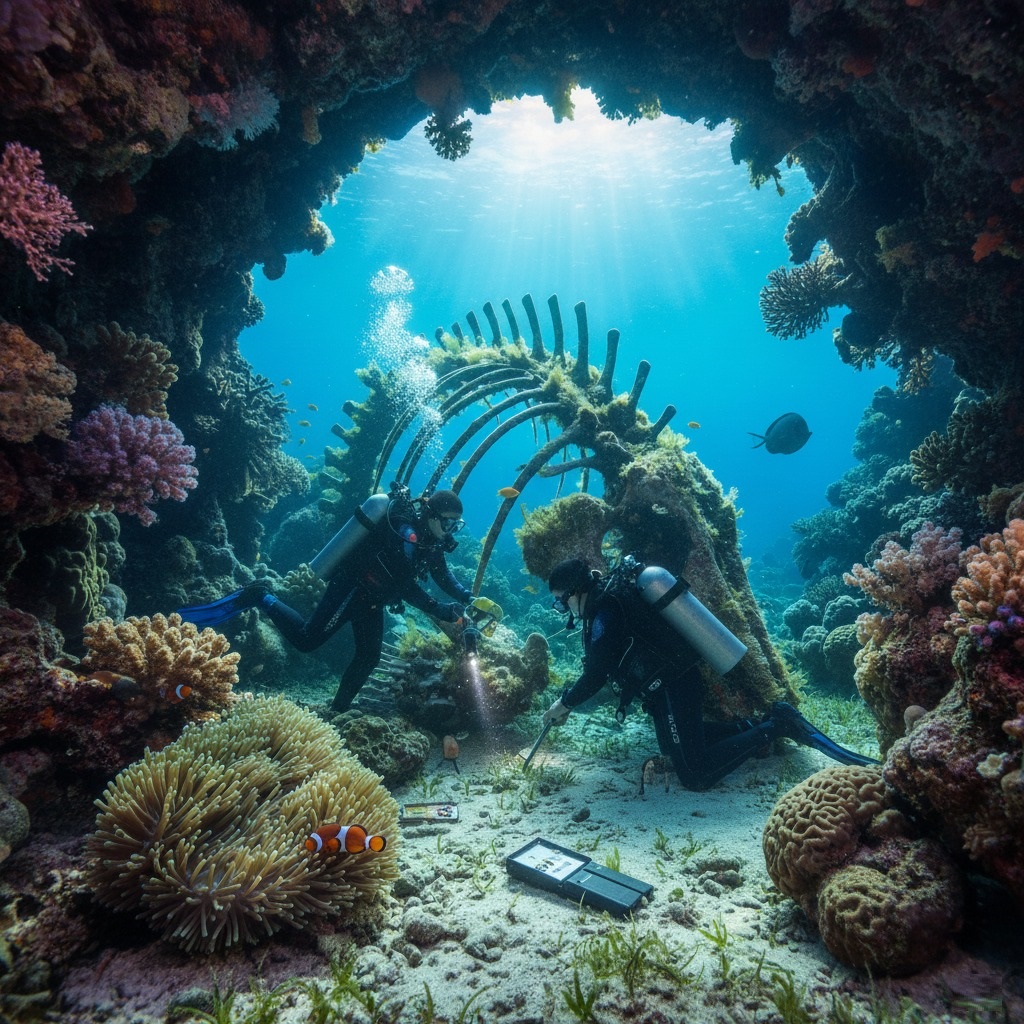Unearthing Secrets of the Deep: The Red Sea’s Submerged Leviathan

The year is 2077. Climate change had long reshaped coastlines, but for Dr. Aris Thorne and his team from the Cairo Institute of Oceanography, it had also unveiled new frontiers for exploration. Their current mission, a deep-scan archaeological survey off the coast of Sudan in the Red Sea, was yielding anomalies unlike any they’d ever encountered.
“Dr. Thorne, we have a significant energy signature at Sector Gamma-7,” called out Anya Sharma, the lead sonar technician, her voice crisp over the comms. “It’s massive, and… fragmented, but structured. Unlike any natural formation.”
Aris’s heart quickened. Years of poring over ancient texts and speculative maps hinted at lost civilizations, perhaps even remnants of mythical beasts once thought confined to folklore. But in the Red Sea, famous for its vibrant coral gardens, such discoveries were rare and revolutionary.
Days later, descending into the turquoise abyss, Aris and his senior diver, Lena Petrova, navigated through a labyrinth of ancient coral formations. The sun, a distant halo above, cast ethereal shafts of light through the water, illuminating a breathtaking, cathedral-like archway. As they passed through, the sight before them stole their breath.
There, resting on the sandy seabed, was the colossal, fossilized skeleton of a creature of impossible scale. Ribs, thicker than ancient oak beams, formed a graceful, decaying cage, partially overgrown with vibrant sponges and delicate anemones. The skull, a monstrous, cavernous structure, stared out into the blue, a silent sentinel of a bygone era. It was more than a whale; it was a leviathan from humanity’s oldest nightmares and greatest legends.
“My God, Aris,” Lena whispered, her voice crackling through their suit comms, “It’s… incredible.”
Aris, holding a specialized survey scanner, began meticulously documenting the site. Tiny clownfish, oblivious to the grandeur of the find, darted in and out of the anemones clinging to the leviathan’s bones. As he brushed away sediment near the skull, a glint caught his eye. Not bone, but metal – intricately carved, partially corroded bronze.
This wasn’t just a natural fossil; it was intertwined with something ancient, something human. Further investigation revealed fragments of what appeared to be an archaic, unknown script etched into a hardened plaque near the creature’s spine. It was a language nobody recognized, hinting at an advanced civilization that had either interacted with or even venerated this beast.
Over the next few months, the site became a bustling underwater excavation. Teams of archaeologists, marine biologists, and linguists worked tirelessly, their submersibles and ROVs buzzing around the skeleton. Carbon dating of the bones pushed their age back an astonishing 15,000 years – a period far predating known seafaring cultures in the region.
The bronze artifacts and the undeciphered script suggested a civilization contemporary with the creature, or one that encountered it shortly after its demise. Was it a sacred burial site? A natural phenomenon that inspired myths? Or perhaps, the chilling possibility, a vessel for an unknown people, lost in a cataclysmic event?
As Aris looked out at the vastness of the Red Sea from their research vessel, he knew they had only just scratched the surface. The “Submerged Leviathan” was not merely a fossil; it was a silent library, holding secrets that could rewrite the history of humanity and the ancient world, waiting to be fully unsealed from its watery tomb. Each piece of coral, every grain of sand, every undeciphered symbol whispered tales of a time when the world was both grander and more mysterious than modern science had ever dared to imagine.
